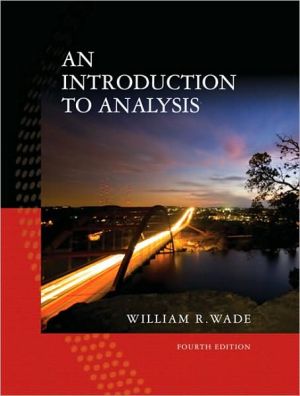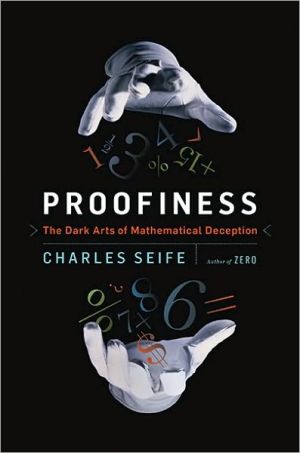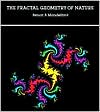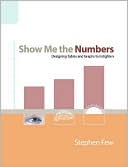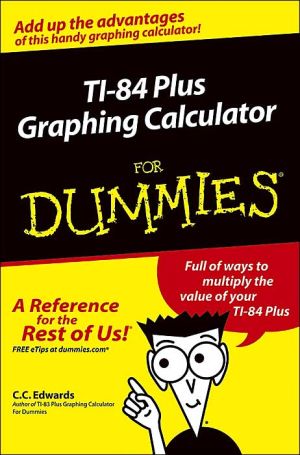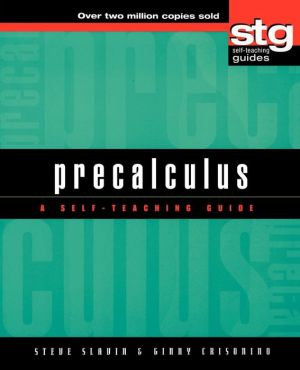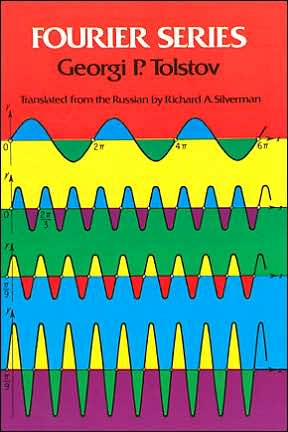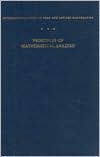An Introduction to Analysis
This text prepares readers for fluency with analytic ideas, such as real and complex analysis, partial and ordinary differential equations, numerical analysis, fluid mechanics, and differential geometry. This book is designed to challenge advanced readers while encouraging and helping readers with weaker skills. Offering readability, practicality and flexibility, Wade presents fundamental theorems and ideas from a practical viewpoint, showing readers the motivation behind the mathematics and...
Search in google:
Covering both one-dimensional and multidimensional theory, this textbook fills the gap between intermediate-level calculus and graduate-level study. It contains chapters on the real number system, sequences in R, continuity on R, differentiability on R, integrability on R, infinite series on real numbers, infinite series on functions, Euclidean spaces, convergence in Rn, metric spaces, differentiation on Rn, integration on Rn, theorems of vector calculus, Fourier series, and differentiable manifolds. Wade teaches at the University of Tennessee. Annotation © 2004 Book News, Inc., Portland, OR Booknews Provides a bridge from sophomore calculus to graduate courses which use analytic ideas such as real and complex analysis, partial and ordinary differential equations, numerical analysis, fluid mechanics, and differential geometry. Early chapters introduce central ideas of analysis in a one-dimensional setting, and later chapters cover multidimensional theory. Enrichment material is provided in separate sections, and also embedded in core material sections, where it is marked with an asterisk. Includes exercises, hints, and answers. For mathematics, science, and engineering majors. The author teaches at the University of Tennessee. Annotation c. Book News, Inc., Portland, OR (booknews.com)
This text provides a bridge from "sophomore" calculus to graduate courses that use analytic ideas, e.g., real and complex analysis, partial and ordinary differential equations, numerical analysis, fluid mechanics, and differential geometry. For a two-semester course, the first semester should end with Chapter 8. For a three-quarter course, the second quarter should begin in Chapter 6 and end somewhere in the middle of Chapter 11.\ Our presentation is divided into two parts. The first half, Chapters 1 through 7 together with Appendices A and B, gradually introduces the central ideas of analysis in a one-dimensional setting. The second half, Chapters 8 through 15 together with Appendices C through F, covers multidimensional theory.\ More specifically, Chapter 1 introduces the real number system as a complete, ordered field, Chapters 2 through 5 cover calculus on the real line; and Chapters 6 and 7 discuss infinite series, including uniform and absolute convergence. The first two sections of Chapter 8 give a short introduction to the algebraic, structure of Rn, including the connection between linear functions and matrices.\ At that point instructors have two options. They can continue covering Chapters 8 and 9 to explore topology and convergence in the concrete Euclidean space setting, or they can cover these same concepts in the abstract metric space setting (Chapter 10). Since either of these options provides the necessary foundation for the rest of the book, instructors are free to choose the approach that they feel best suits their aims.\ With this background material out of the way, Chapters 11 through 13 develop the, machinery and theory ofvector calculus. Chapter 14 gives a short introduction to Fourier series, including summability and convergence bf Fourier series, growth of Fourier coefficients, and uniqueness of trigonometric series. Chapter 15 gives a short introduction to differentiable manifolds which culminates in a proof of Stokes's Theorem on differentiable manifolds.\ Separating the one-dimensional from the n-dimensional material is not the most efficient way to present the material, but it does have two advantages. The more abstract, geometric concepts can be postponed until students have been given a thorough introduction to analysis on the real line. Students have two chances to master some of the deeper ideas of analysis (e.g., convergence of sequences, limits of functions, and uniform continuity).\ We have made this text flexible in another way by including core material and enrichment material. The core material, occupying fewer than 384 pages, can be covered easily in a one-year course. The enrichment material is included for two reasons: Curious students can use it to delve deeper into the core material or as a jumping off place to pursue more general topics, and instructors can use it to supplement their course or to add variety from year to year.\ Enrichment material appears in enrichment sections, marked with a superscript e, or in core sections, where it is marked with an asterisk. Exercises that use enrichment material are also marked with an asterisk, and the material needed to solve them is cited in the Answers and Hints section. To make course planning easier, each enrichment section begins with a statement which indicates whether that section uses material from any other enrichment section. Since no core material depends on enrichment material, any of the latter can be skipped without loss in the integrity of the course.\ Most enrichment sections (5.5, 5.6, 6.5, 6.6, 7.5, 9.4, 11.6, 12.6, 14.1, 15.1) are independent and can be covered in any order after the core material that precedes them has been dealt with. Sections 9.5, 12.5, and 15.2 require 9.4, Section 15.3 requires 12.5, and Section 14.3 requires 5.5 only to establish Lemma 14.25. This result can easily be proved for continuously differentiable functions, thereby avoiding mention of functions of bounded variation. In particular, the key ideas in Section 14.3 can be covered without the background material from Section 5.5 anytime after finishing Chapter 7.\ Since for many students this is the last (for some the only) place to see a rigorous development of vector calculus, we focus our attention on classical, nitty-gritty analysis. By avoiding abstract concepts such as vector spaces and the Lebesgue integral, we have room for a thorough, comprehensive introduction. We include sections on improper integration, the gamma function, Lagrange multipliers, the Inverse and Implicit Function Theorem, Green's Theorem, Gauss's Theorem, Stokes's Theorem, and a full account of the change-of-variables formula for multiple Riemann integrals.\ We assume that the reader has completed a three-semester or four-quarter sequence in elementary calculus. Because many of our students now take their elementary calculus in high school (where theory may be almost nonexistent), we assume that the reader is familiar only with the mechanics of calculus, i.e., can differentiate, integrate, and graph simple functions of the form y = f (x) or z = f (x, y). We also assume that the reader has had an introductory course in linear algebra, i.e., can add, multiply, and take determinants of matrices with real entries, and are familiar with Cramer's Rule. (Appendix C, which contains an exposition of all definitions and theorems from linear algebra used in the text, can be used as review if the instructor deems it necessary.)\ Always we emphasize the fact that the concepts and results of analysis are based on simple geometric considerations and on analogies with material already known to the student. The aim is to keep the course from looking like a collection of tricks and to share enough of the motivation behind the mathematics so that students are prepared to construct their own proofs when asked. We begin complicated proofs with a short paragraph (marked STRATEGY:) which shows why the proof works, e.g., the Archimedean Principle (Theorem 1.22), Density of Rationale (Theorem 1.24), Cauchy's Theorem (Theorem 2.29), Change of Variables in R (Theorem 5.34), Riemann's Theorem about rearrangements (Theorem 6.29), the Implicit Function Theorem (Theorem 11.47), the Borel Covering Lemma (Theorem 9.10), and Stokes's Theorem on Manifolds (see page 563). We precede abstruse definitions or theorems with a short paragraph that describes, in simple terms, what behavior we are examining, and why, e.g., Cauchy sequences, one-sided limits, upper and lower Riemann sums, the Integral Test, Abel's Formula, uniform convergence, the total derivative, compact sets, differentiable curves and surfaces, smooth curves, and orientation equivalence. We include examples to show why each hypothesis of a major theorem is necessary, e.g., the Nested Interval Property, the Bolzano-Weierstrass Theorem, the Mean Value Theorem, the Heine-Borel Theorem, the Inverse Function Theorem, the existence of exact differentials, and Fubini's Theorem.\ Each section contains a collection of exercises that range from very elementary (to be sure the student understands the concepts introduced in that section) to more challenging (to give the student practice in using these concepts to expand the theory). To minimize frustration, some of the more difficult exercises have several parts that serve as an outline to a solution of the problem. To keep from producing students who know theory but cannot apply it, each set of exercises contains a mix of computational and theoretical assignments. (Exercises that play a prominent role later in the text are marked with a box. These exercises are an integral part of the course, and all of them should be assigned.)\ Since many students have difficulty reading and understanding mathematics, we have paid close attention to style and organization. We have consciously limited the vocabulary, kept notation consistent from chapter to chapter, and presented the proofs in a unified style. Individual sections are determined by subject matter, not by length of lecture, so that students can comprehend related results in a larger context. Examples and important remarks are numbered and labeled so that students can read the text in small chunks. (Many of these, included for the student's benefit, need not be covered in class.) Paragraphs are short and focused so that students are not overwhelmed by long-winded explanations. To help students discern between central and peripheral results, the word "Theorem" is used relatively sparingly; preliminary results and results that are used in only one section are called Remarks, Lemmas, and Examples.\ How does the third edition differ from the second? We have corrected a number of misprints. We have broken with tradition by stating definitions explicitly with an "if and only if." (How can we chide our students for using the converse of a result when it appears that we do so about half the time we apply a definition?) We have continued to simplify and reorganize the presentation. Chapters 8 and 9 have been reworked completely. Chapter 8 now includes an introduction to both the algebraic and topological structure of Euclidean spaces but makes no premature mention of the total derivative. All material about limits (of sequences and functions) in a Euclidean space have been gathered together in Chapter 9. Chapter 11 now contains a complete exposition of the total derivative, gathering together material that had before been scattered in two different chapters. Chapter 12 has been further simplified by altering the definition of a Jordan region and by making the 'observation that the behavior of a function on the interior of a Jordan region E is what really determines the value of its Riemann integral on E. This allows us to avoid beginning every third proof by choosing a grid so that the outer sum on the boundary of E is small. Finally, the presentation of curves and surfaces in Chapter 13 has been further simplified as we continue to search for a minimal path to the theorems of Gauss, Green, and Stokes.\ I wish to thank Mr. P.W. Wade and Professors S. Fridli, G.S. Jordan, Mefharet Kocatepe, J. Long, M.E. Mays, M.S. Osborne, P.W. Schaefer, F.E. Schroeck, and Ali Sinan Sertoz, who carefully read parts of the first edition and made many valuable suggestions and corrections. Also, I wish to express my gratitude to Ms. C.K. Wade for several lively discussions of a pedagogical nature, which helped shape the organization and presentation of this material, and to F. David Lesley of San Diego State University and William Yslas Velez of the University of Arizona, for their insightful review of the third edition text.\ Finally, I wish to make special mention of Professor Lewis Lum, who made many careful and perspicuous comments about style, elegance of presentation, and level of rigor which have found their way into this third edition.\ If there remain any typographical errors, I plan to keep an up-to-date list at my Web site (http://www.math.utk.edu/~wade). If you find errors which are not listed at that site, I would appreciate your contacting me at the e-mail address below.\ William R. Wade
Pt. IOne-dimensional theory1The real number system12Sequences in R353Continuity on R584Differentiability on R855Integrability on R1076Infinite series of real numbers1547Infinite series of functions184Pt. IIMultidimensional theory8Euclidean spaces2259Convergence in R[superscript n]25610Metric spaces29011Differentiability on R[superscript n]32112Integration on R[superscript n]38113Fundamental theorems of vector calculus44914Fourier series50615Differentiable manifolds538App. AAlgebraic laws570App. BTrigonometry573App. CMatrices and determinants577App. DQuadric surfaces583App. EVector calculus and physics587App. FEquivalence relations590
\ BooknewsProvides a bridge from sophomore calculus to graduate courses which use analytic ideas such as real and complex analysis, partial and ordinary differential equations, numerical analysis, fluid mechanics, and differential geometry. Early chapters introduce central ideas of analysis in a one-dimensional setting, and later chapters cover multidimensional theory. Enrichment material is provided in separate sections, and also embedded in core material sections, where it is marked with an asterisk. Includes exercises, hints, and answers. For mathematics, science, and engineering majors. The author teaches at the University of Tennessee. Annotation c. Book News, Inc., Portland, OR (booknews.com)\ \
